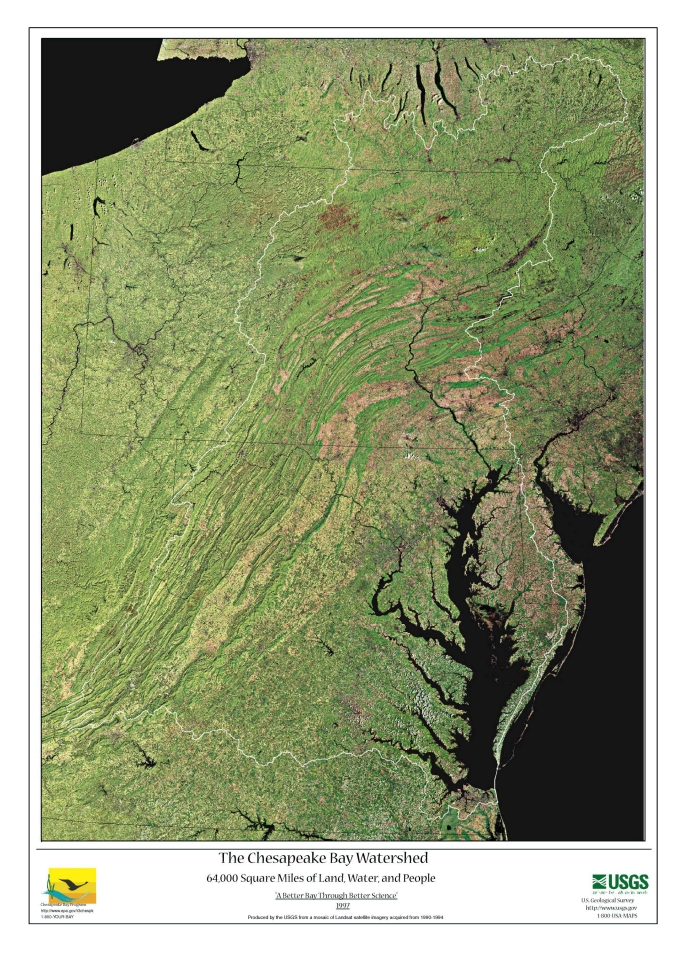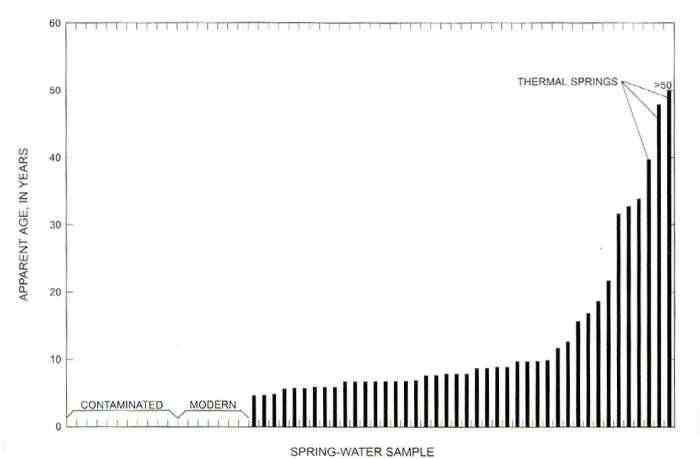Chesapeake Bay Program
In This Document
The Chesapeake Bay Program (CBP) of the U.S. Geological Survey has been attempting to estimate the number of years it should take to see water-quality improvements after implementation of nutrient-reduction practices. There will be a "lag time" between nutrient-management practices and improvements in surface-water quality based on the surface and subsurface characteristics of the Bay watershed. The USGS has provided initial findings concerning the amount, nutrient load, and residence time of ground water in shallow aquifers in the Bay watershed. The USGS has determined that about half of the water and nutrient load entering the rivers that drain to the Bay travels through the ground-water system. The USGS has also identified the effect that major hydrogeomorphic regions (different areas of rock and watershed characteristics) have on ground-water discharge and load. Data collected on ground-water residence times indicate that nutrients may take between 0-60 years to move through shallow aquifers before discharging to rivers, but most of the residence times are about 10 years. Additionally, there may not be a significance difference between residence times in different HGMR's. Consequently, the CBP is formulating strategies to target further reductions of nutrients based on the characteristics of the ground water and its relation to HGMR's. In addition, the CBP wants to understand the magnitude of direct discharge to the Bay, the role of ground-water discharge for sustaining aquatic health in streams, and high nutrient concentrations in ground water affecting human health.
Investigators:
Bruce D. Lindsey (U.S. Geological Survey, 840 Market St., Lemoyne, PA 17043), Michael J. Focazio, L. Niel Plummer, John Karl Bohlke, Eurybiades Busenberg, and William C. Burton (U.S. Geological Survey, Reston, VA 20192), Scott W. Phillips and Colleen A. Donnelly (U.S. Geological Survey, 8987 Yellow Brick Rd., Baltimore, MD 21237).
Publications:
Focazio, M.J., Plummer, L.N., Bohlke, J.K., Busenberg, E., Bachman, L.J., and Powers, D.S., 1998, Preliminary estimates of residence times and apparent ages of ground water in the Chesapeake Bay watershed and water-quality data from a survey of springs. U.S. Geological Survey Water-Resources Investigations Report 97-4225, 75p.
Lindsey, B.D., Phillips, S.W., Donnelly, C.A., Speiran, G.K., Plummer, L.N., Bohlke, J.K., Focazio, M.J., Burton, W.C., and Busenberg, Eurybiades, 2003, Residence times and nitrate transport in ground water discharging to streams in the Chesapeake Bay Watershed: U.S. Geological Survey Water-Resources Investigations Report 03-4035, 201 p. View this Publication (PDF, 9.56 MB)
Plummer, L.N., Böhkle, J.K., and Busenberg, Eurybiades, 2003, Approaches for ground-water dating, in Lindsey, B.D., Phillips, S.W., Donnelly, C.A., Speiran, G.K., Plummer, L.N., Böhlke, J.K., Focazio, M.J., Burton, W.C., and Busenberg, Eurybiades, Residence times and nitrate transport in ground water discharging to streams in the Chesapeake Bay Watershed: U.S. Geological Survey Water-Resources Investigations Report 03-4035, p. 12-24. View this Publication (PDF, 782 KB)
Photos:

Chesapeake Bay Watershed, showing the Susquehanna, Potomac, and James Rivers, Delaware Bay, and the Delaware River

Distribution of apparent ages of water collected from springs in the Chesapeake Bay watershed in September and November 1996